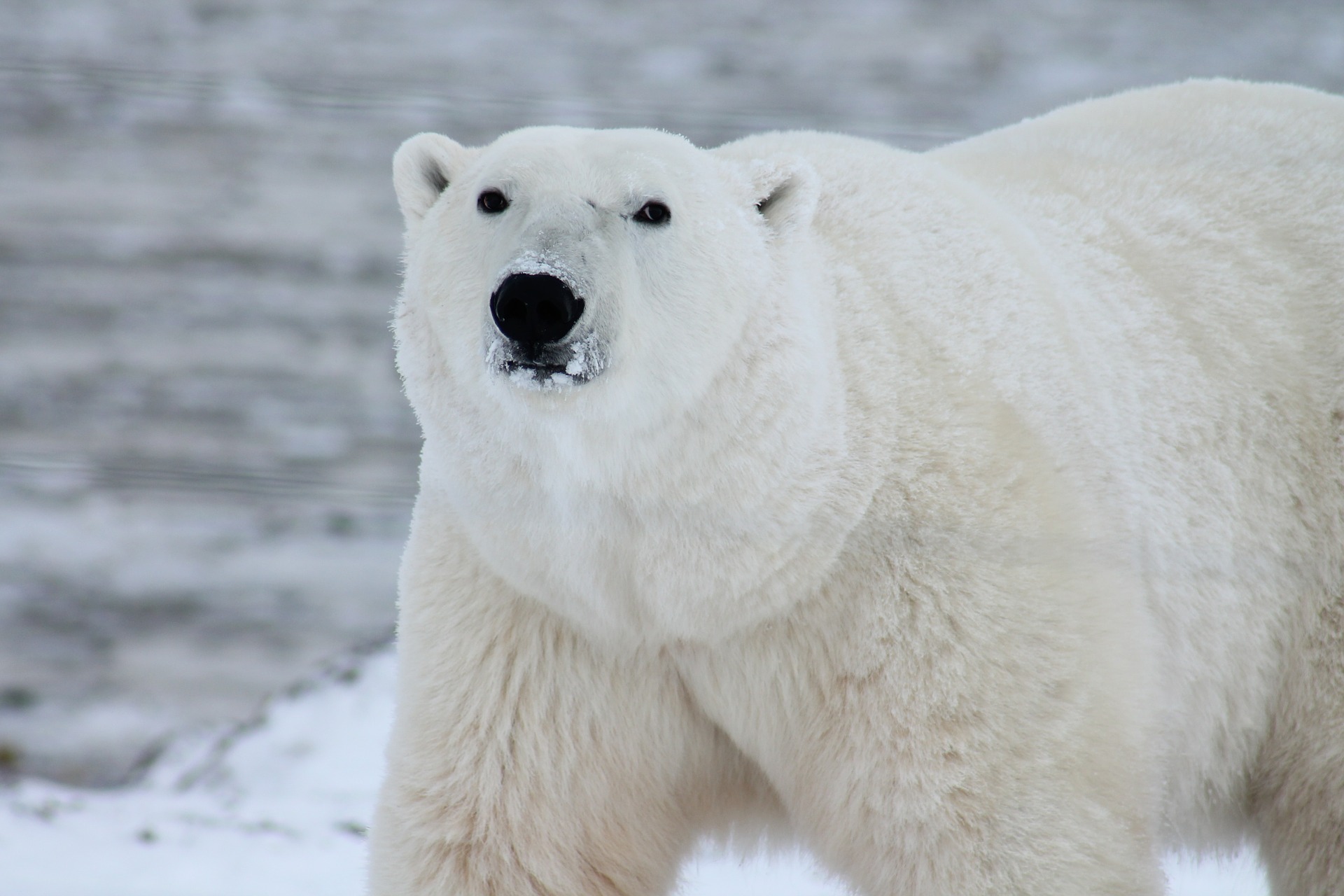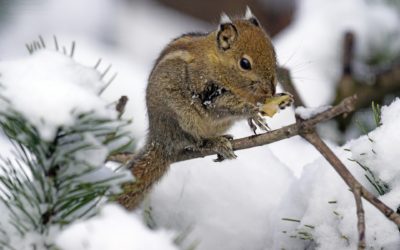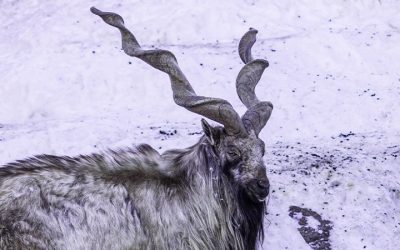By Pramod Nair
The Polar Regions are teeming with a variety of life, despite being harshly cold, seemingly barren and giving the impression of not at all hospitable. The animals that make the Polar Regions their home use an array of special adaptations to survive the punishing cold. They are some of the best examples of adaptations – both anatomical and behavioral – that allow life to thrive in the extreme cold, freezing living conditions.
The Polar Bear

Polar Bears have special adaptations on their skin for countering the freezing cold of the poles. A double layer of fur, along with a dense undercoat keeps them warm. They keep their skin dry with the help of an oily, water-resistant layer of hairs, while a long fur layer acts as an insulator by trapping air inside thereby providing resistance against cold. In addition to this, a thick layer of fat known as the blubber also defends the Polar bears against cold.
Their feet are also specially designed for survival in the freezing conditions of the polar region. The large surface area of their paws allows the bear to spread out their weight evenly while walking on the icy surfaces and in water, and the hairs and small dermal bumps on the sole of their feet provides them with excellent grip.
The Arctic Fox

Nature has designed the Arctic Fox with extreme survival in mind. The body shape of the animal is extremely fit for survival in the cold weather of the Arctic tundra. Physical features like the short and stocky body, small ears, short muzzle, neck, tail and legs are all developed with the goal of reducing heat loss.
The whole purpose of the smaller extremities – an external body part that protrudes from an organism’s body – in the Arctic Fox is to reduce the ratio of the animal’s surface area to its volume, which lowers the heat loss. Another advantage of having smaller appendages is that they can withstand frostbite better by staying warmer than larger body parts.
The fur coat of an Arctic fox is thick and insulating, which keep them warm while also providing camouflage. Arctic fox grows two distinct set of fur coats depending on the season. Their summer coat is relatively thin and dark in colour while their magnificent winter coat is thick and snow white in colour. The thick fur on their tails reduce heat loss and the fur on their paws help them in safely moving through slippery surfaces. One of the behavioural adaptations used by the Arctic fox to fight against freezing cold is tunnelling in the ice.
The Arctic Seal

Seals that live in the Polar conditions have a thick layer of fat under their skin called blubber. This blubber acts as an insulation that traps body heat in, which allows the seal to swim in the freezing waters without causing harm to internal organs. By regulating the blood flow to the blubber the seal can keep the blood warm. They do this by restricting the blood away from the blubber and surface of their skin thereby preventing heat loss from the body.
Their eyes have a specially developed pupil and a special membrane, which protects the seals while diving underwater and from the harsh glare of the sunlight that reflects off the ice while they are on the land. Their sleek, powerful body structure along with their ability to hold their breath beneath the water for more than ten minutes makes them excellent swimmers and aquatic hunters.
The Arctic Hare

Like the Arctic fox, the Arctic Hares also have small body appendages – nose, ears and limbs – for survival in the Arctic tundra. A thick coat of fur and a higher percentage of body fat, help them remain warm in the icy conditions. Their fur coat is double layered with a short under coat and a long, thick top coat. Their feet are padded with thick fur and strong claws on their front feet helps them dig into hard packed snow while tunneling.
Apart from the physical adaptations present, the Arctic hares also employ a special behavioral adaptation for surviving in the harsh conditions. During extremely cold weather they huddle together in groups as large as hundreds of hares, to retain warmth and for protection. Heat loss from body is drastically reduced due to this huddling.
Other Polar Animals and Survival Adaptations
A wide variety of physical and behavioral adaptations are used by Polar animals for surviving the frigid conditions and a combination of many of these adaptations are present in Polar species in one form or another. Penguins are an example of having multiple adaptations like thick skin, short appendages, and high levels of body fat for countering extreme cold. They have scale like feathers, which are arranged as overlapping layers for increased protection against heavy winds. They also employ huddling together to keep warm and it is remarkable that about fifty percentage of the heat loss is reduced by this behavioral adaptation.
Arctic lemmings, the small furry rodents found in the Arctic tundra use burrowing underneath the ice effectively as a measure to escape the cold. They make long tunnels in which the snow traps the air that acts as a natural insulator keeping the inside of the tunnel warm.
Life in the marine environments of the Polar Regions also are under a constant fight for survival as they face some of the most challenging living conditions on our planet. One of the life threatening conditions that fish and other marine organisms face in the extreme frigid waters of the Southern Ocean is the formation of ice crystals inside the bloodstream. This can freeze the whole body of the organism leading to its death. Certain species of marine organisms from the region have evolved some of the most amazing survival adaptations capable of preventing internal freezing from happening.
Species like Antarctic Toothfish have a special type of protein in their blood, which binds to the ice crystals that form in the blood and prevent them from growing, acting like an antifreeze. They also have a special type of clear blood, which lack red blood cells, preventing the thickening of the blood when the sea water reaches freezing temperatures.






0 Comments